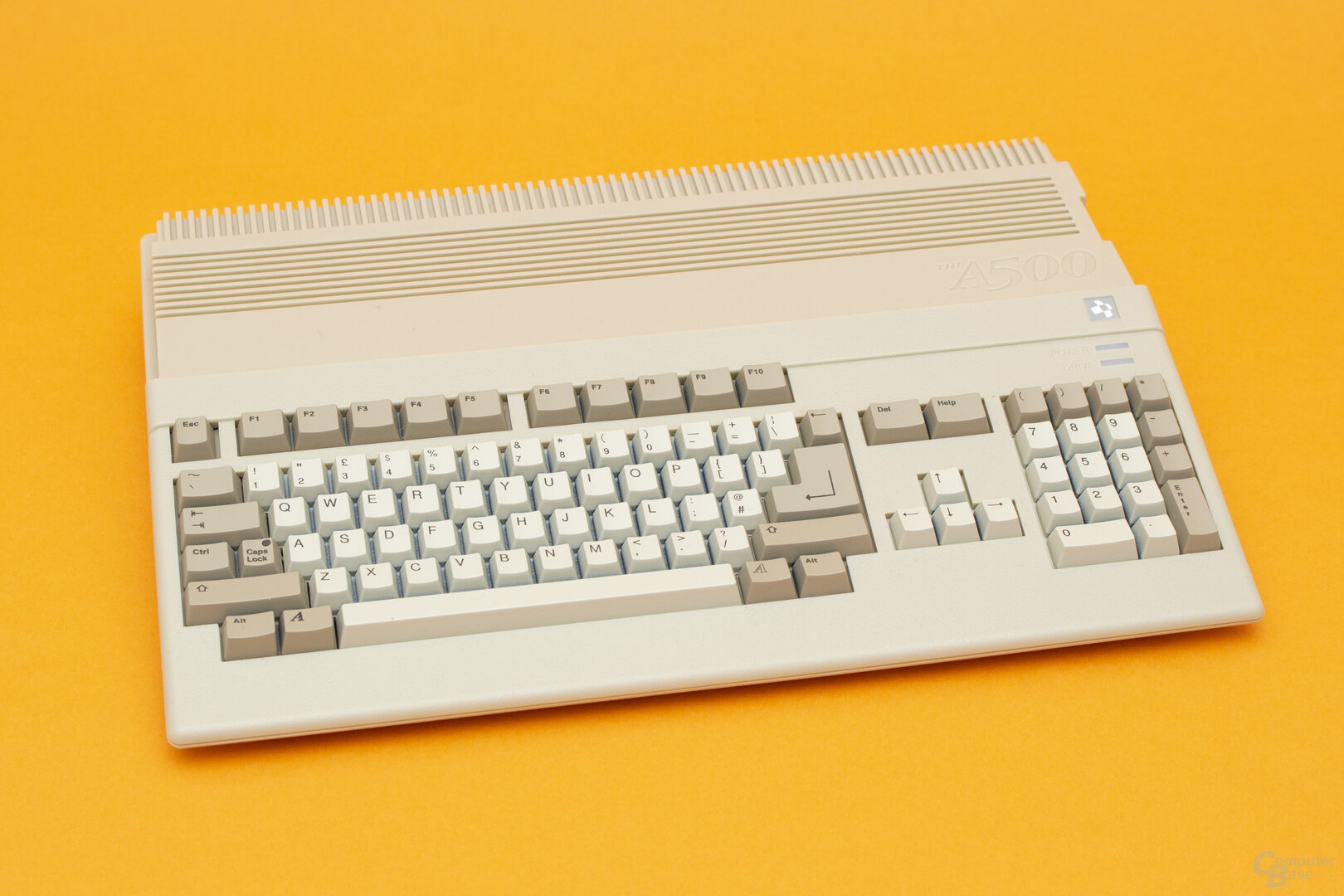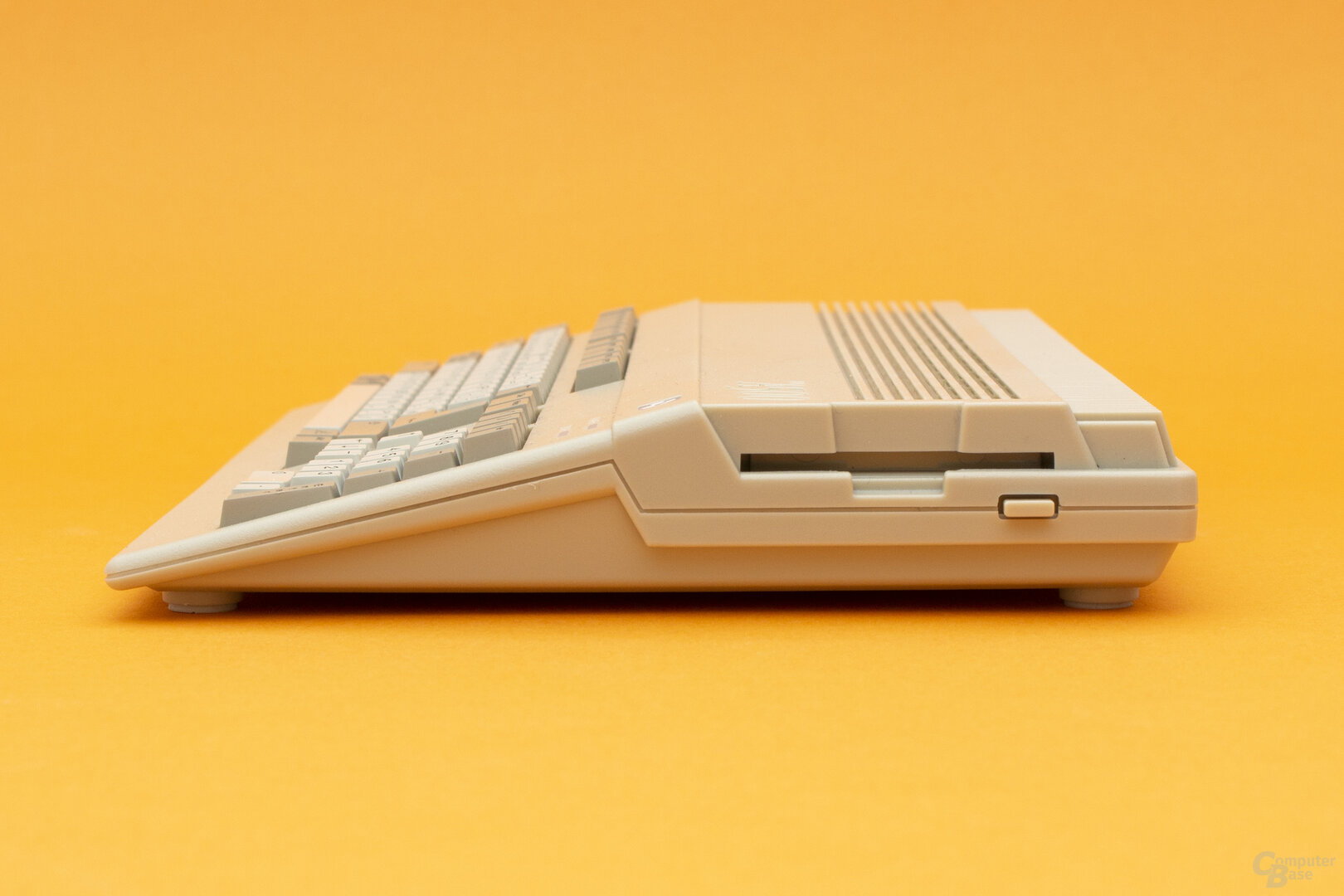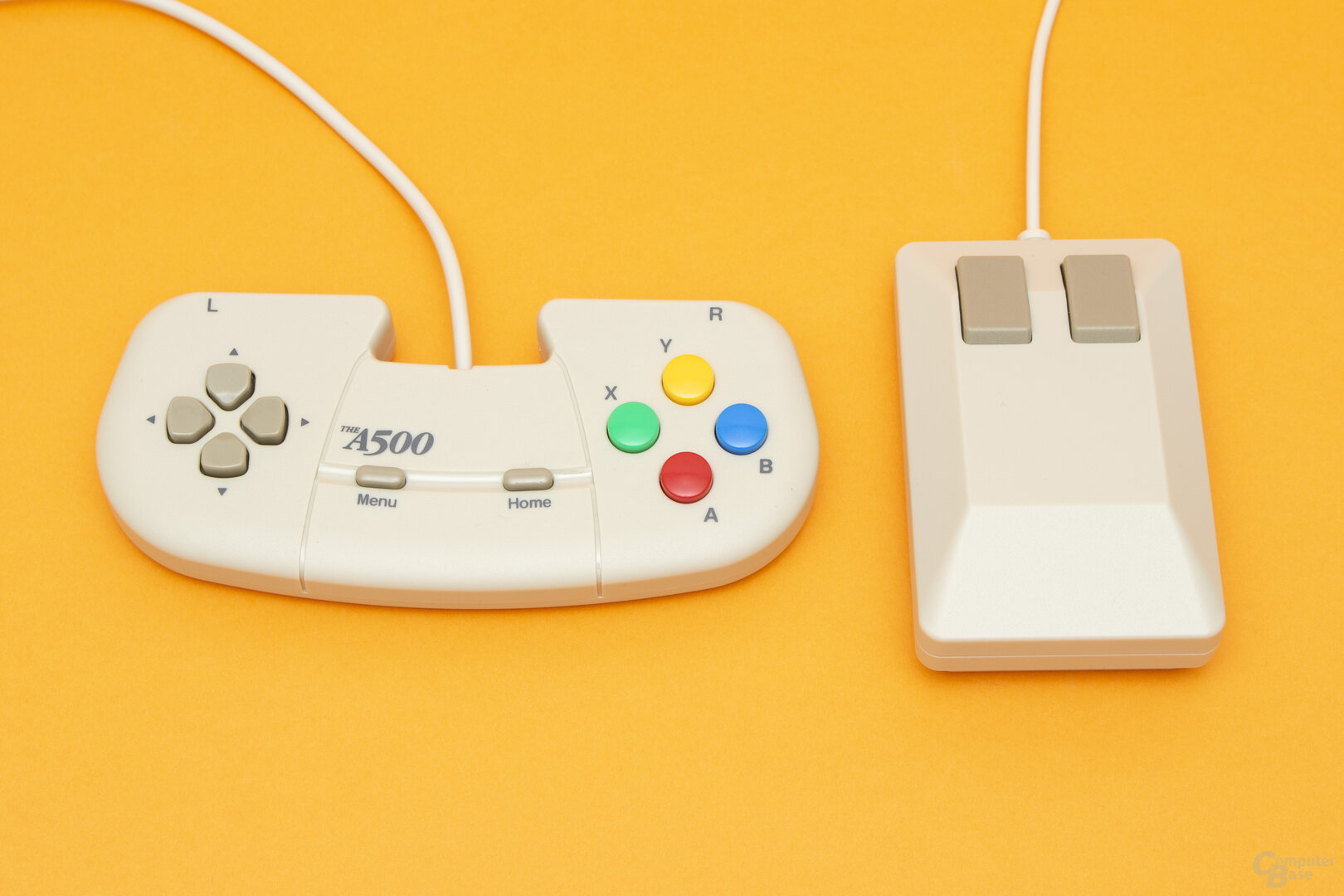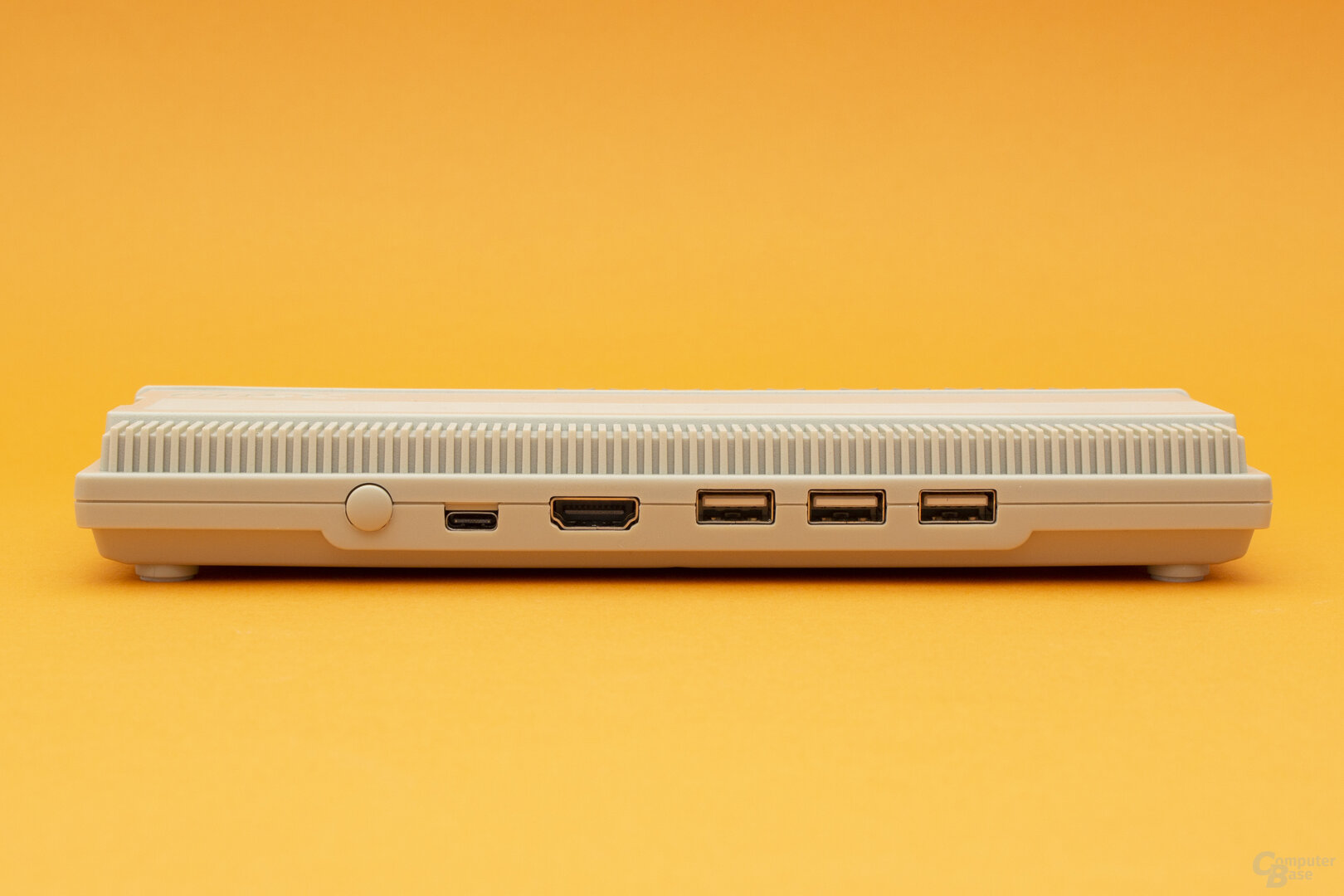With the TheA500 Mini, Retro Games is releasing the third Emu console after TheVIC20 and TheC64, which supports other models in addition to the Amiga 500. The technical implementation is convincing in many respects, but the lack of joystick support greatly reduces the retro feeling.
Table of contents
- 1 The cult computer for retro nostalgics
- The Amiga – a story that almost ended differently
- TheA500 Mini – design, workmanship and content
- 2 Technology of TheA500
- Not a Motorola SoC like the original
- With HDMI for modern displays
- Amiga 500, 600 and 1200 are emulated
- 3 initial setup
- Balanced selection of games – not for everyone< /li>
- External games possible, but cumbersome
- 4 games and conclusion
- Games on the TheA500 Mini
- Without joystick suffers from nostalgia
- Conclusion
The Amiga – a story that almost ended differently
The history of the origins of the Amiga is no less confused and exciting than that of its “superbrother”, the Commodore C64, and goes far back into the early 1980s. At that time, a group of enthusiasts gathered around chip designer Jay Miner, who had just left his position at Atari. There he was significantly involved in the development of the Atari VCS 2600 game console in the form of the TIA, which combined up to 150 of the chips that were then installed in arcade machines on a single processor. He also worked on the Atari 400 and Atari 800 home computers.
After leaving in 1981 and taking a detour via Zymos, which manufactured chips for pacemakers, he founded the company “Hi-Toro”, which was later to be renamed “Amiga”. The aim was to use this to create a powerful yet affordable computer for both home use and everyday office use, which could be expanded with numerous peripherals. In order to be able to raise the necessary funds for the development, Hi-Toro manufactured accessories in the form of game cartridges and controllers for the VCS 2600. However, when the costs for the “Lorraine” project, as the Amiga was called internally, rose steadily, Atari was won as a sponsor. The chip development of the prototype should be further financed with the received 500,000 US dollars. However, the agreement had a small but crucial side note: If the borrowed sum could not be repaid by June 30, 1984, the chips and their technology would become the property of Atari – a thoroughly worthwhile business for the company. So that the project could continue, Amiga was finally sold to Commodore and the amount due was paid on the due date.
Finally, in 1985, the market launch for the Amiga 1000 took place, which was not very successful due to the rather unclear area of application and errors in marketing. This only changed when Commodore presented the Amiga 500 and Amiga 2000 models in 1987. The former was intended to succeed the C64 and was therefore designed more for games and light applications, while the latter was aimed at professional users.
If you want to learn more about the history of the Commodore Amiga, we recommend the documentation “Die Amiga-Story”, which can be found on YouTube and from time to time in the ZDF media library and offers a much deeper insight into the development than is possible here in the short section.
TheA500 Mini – Design, Processing and Content
If the new offspring from Retro Games, which is currently offered for an RRP of 130 euros, is removed from its packaging, many a buyer will probably get a “that's cute” feeling. With its 21 × 14.5 cm (W × D), the model is less than a quarter the size of its larger role model, which is still 47 × 33 cm. Nevertheless, it looks confusingly similar to the original. Even the pseudo cooling fins have been thought of, even if they are arranged slightly differently on the underside than on the original. The biggest difference is in the lettering embedded in the case, which still contained the designation “AMIGA” on the Commodore computer and was probably changed to “TheA500” on the mini version for licensing reasons. The logo underneath and the lettering “Commodore A500” are also omitted and replaced by the Mini logo. The LED lights placed underneath give the new version the flair of the original. After switching on, the power LED welcomes the user in what feels like the same red as in the first edition of the Amiga 500.
 TheA500 Mini Review
TheA500 Mini Review As with the mini version of TheC64, the keyboard is a dummy – none of the mini keys have a function. This corresponds to the US version with a QWERTY layout. In Germany, corresponding devices were sold with umlauts, i.e. in a QWERTZ arrangement. However, a keyboard can be connected to the TheA500 and used.
Fewer connections
The floppy disk drive is indicated on the right side of the case, which also has no function due to its size alone. Nevertheless, it would have been interesting if the manufacturer had taken the opportunity and installed a slot for memory cards in SD format instead, in order to relieve the USB ports. There are three of these, all located on the back of the Mini. External peripherals such as the included gamepad or the tank mouse, which is also included in the set, can be connected to it. The latter is based on the “Freundin”, but is also smaller and is no longer equipped with a ball, but with an optical sensor for motion detection.
 The indicated floppy disk drive would have looked good with a card slot
The indicated floppy disk drive would have looked good with a card slot If you own the TheC64 Mini or the larger TheC64 (test) with a working keyboard, you can also connect the replica of the classic Competition Pro or your own controller. Most input devices from other manufacturers should also work, only with the Xbox One there should be problems. Due to the lack of a corresponding pad, no further information can be given on this.
 The range includes a replica tank mouse and a Gamepad
The range includes a replica tank mouse and a Gamepad The back also houses the power switch and the USB power connector. While the manufacturer still relied on a connection in the micro form factor for the TheC64, the new representative uses USB-C. A corresponding cable is included with the set, but the user has to provide a power supply himself – according to the manufacturer, 5 V and 1 A should be sufficient. Of course, the HDMI interface and cable should not be missing for connecting to a monitor or a TV set. The TheA500 Mini does not have a separate audio output, which can sometimes lead to problems. More on that later.
 TheA500 Mini offers 3 × USB ports and one HDMI port
TheA500 Mini offers 3 × USB ports and one HDMI port Gamepad Deviation
The knowledgeable retro fan will have noticed the controller simply called “TheGamepad” by Retro Games, but at the time neither the Amiga 500 nor the emulated Amiga 600 and Amiga 1200, but was part of Commodore's CD³² in a similar design. This promising console, which had a short life due to Commodore's demise, which was already becoming apparent at the time, and the resulting lack of marketing, was in turn based on the Amiga 1200, which possibly closes the circle. However, why such a controller and no joystick is included with the set will be explained later.
Page 1/4 Next page
Technology of TheA500